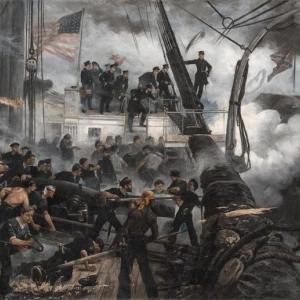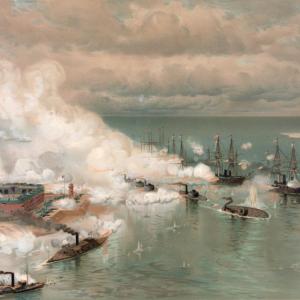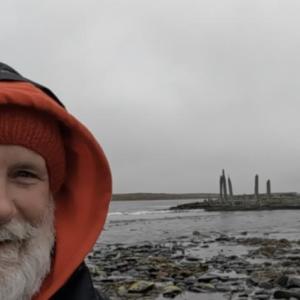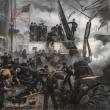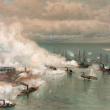Half Seas Over: Damn Those Torpedoes!
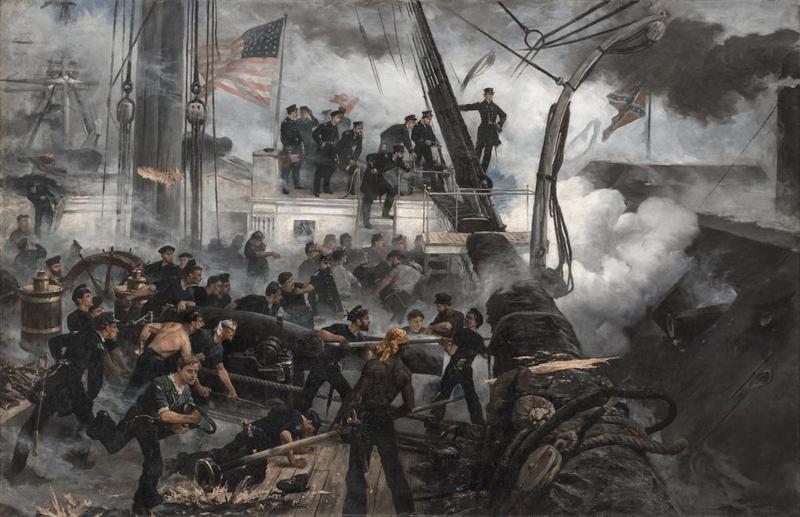 “Battle of Mobile Bay” painted by Louis Prang. At left foreground is the CSS Tennessee; at the right the USS Tecumseh is sinking (Image in Public Domain, from the Library of Congress)
“Battle of Mobile Bay” painted by Louis Prang. At left foreground is the CSS Tennessee; at the right the USS Tecumseh is sinking (Image in Public Domain, from the Library of Congress)
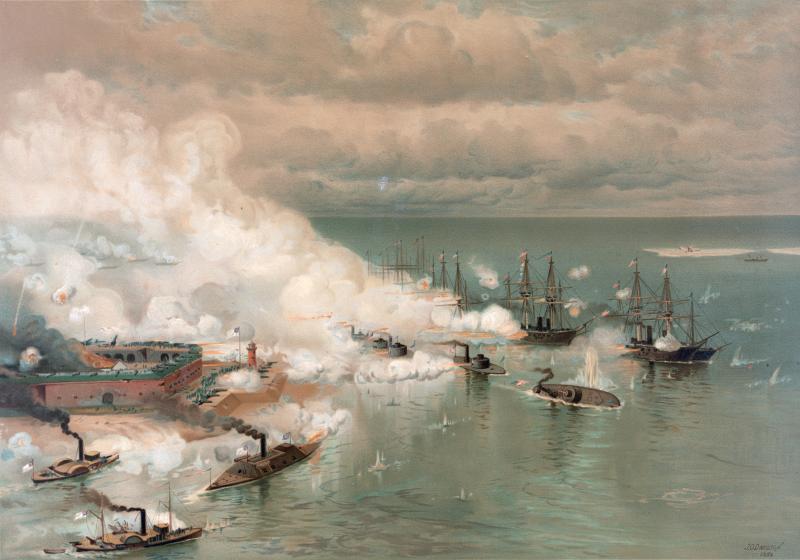 “An August Morning with Farragut; The Battle of Mobile Bay, August 5, 1864” painted by William Heysham Overend 1883 (Image in Public Domain, from the Collections of the Army Navy Club, Washington, D.C.)
“An August Morning with Farragut; The Battle of Mobile Bay, August 5, 1864” painted by William Heysham Overend 1883 (Image in Public Domain, from the Collections of the Army Navy Club, Washington, D.C.)
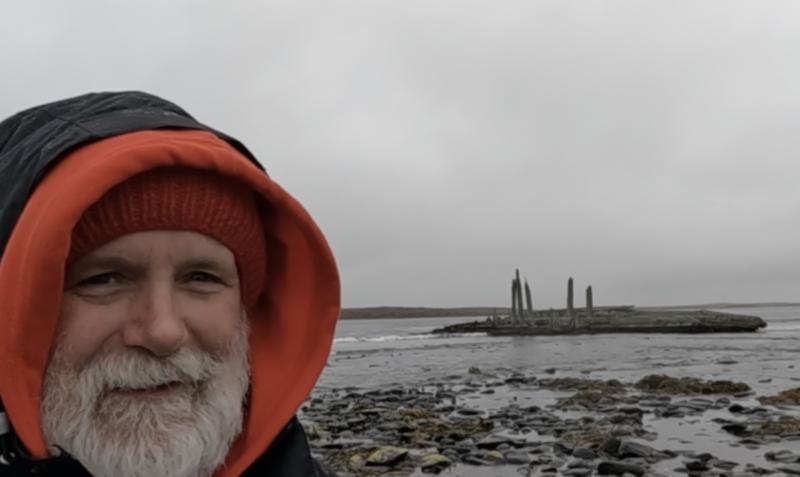 Charles H. Lagerbom’s column Half Seas Over is a maritime reference where one is half sunk or right in the midst of it all (or an allusion to being drunk) He received his M.A in history and archaeology from UMaine and organized shipwreck surveys in Maine lakes, the 1779 Penobscot Expedition and the 17th century English galleon Angel Gabriel. Two field seasons were spent in Antarctica as a glacial geology field assistant for the University of Maine Quaternary Institute, now Climate Change Institute. He is author of Henry R. Bowers: The Fifth Man (1999); Whaling in Maine (2020) and Maine to Cape Horn: The Most Dangerous Journey (2021). His latest book The Hero Way: History and Science of an Antarctic Research Vessel is due Spring 2025. A 30- year veteran teacher, Charles teaches AP US History and is part of the Belfast Marine Institute, dedicated to connecting youth with the maritime world. He speaks on topics regarding Antarctica, Cape Horn, Maine whaling and New England Colonial and maritime history.
Charles H. Lagerbom’s column Half Seas Over is a maritime reference where one is half sunk or right in the midst of it all (or an allusion to being drunk) He received his M.A in history and archaeology from UMaine and organized shipwreck surveys in Maine lakes, the 1779 Penobscot Expedition and the 17th century English galleon Angel Gabriel. Two field seasons were spent in Antarctica as a glacial geology field assistant for the University of Maine Quaternary Institute, now Climate Change Institute. He is author of Henry R. Bowers: The Fifth Man (1999); Whaling in Maine (2020) and Maine to Cape Horn: The Most Dangerous Journey (2021). His latest book The Hero Way: History and Science of an Antarctic Research Vessel is due Spring 2025. A 30- year veteran teacher, Charles teaches AP US History and is part of the Belfast Marine Institute, dedicated to connecting youth with the maritime world. He speaks on topics regarding Antarctica, Cape Horn, Maine whaling and New England Colonial and maritime history.
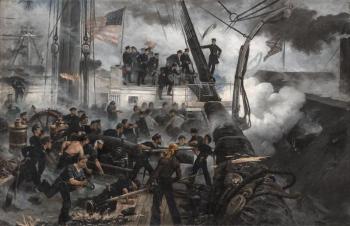 “Battle of Mobile Bay” painted by Louis Prang. At left foreground is the CSS Tennessee; at the right the USS Tecumseh is sinking (Image in Public Domain, from the Library of Congress)
“Battle of Mobile Bay” painted by Louis Prang. At left foreground is the CSS Tennessee; at the right the USS Tecumseh is sinking (Image in Public Domain, from the Library of Congress)
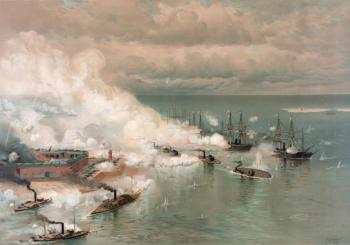 “An August Morning with Farragut; The Battle of Mobile Bay, August 5, 1864” painted by William Heysham Overend 1883 (Image in Public Domain, from the Collections of the Army Navy Club, Washington, D.C.)
“An August Morning with Farragut; The Battle of Mobile Bay, August 5, 1864” painted by William Heysham Overend 1883 (Image in Public Domain, from the Collections of the Army Navy Club, Washington, D.C.)
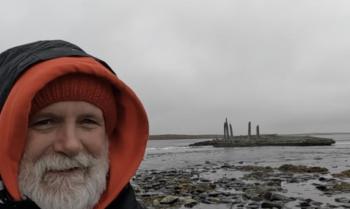 Charles H. Lagerbom’s column Half Seas Over is a maritime reference where one is half sunk or right in the midst of it all (or an allusion to being drunk) He received his M.A in history and archaeology from UMaine and organized shipwreck surveys in Maine lakes, the 1779 Penobscot Expedition and the 17th century English galleon Angel Gabriel. Two field seasons were spent in Antarctica as a glacial geology field assistant for the University of Maine Quaternary Institute, now Climate Change Institute. He is author of Henry R. Bowers: The Fifth Man (1999); Whaling in Maine (2020) and Maine to Cape Horn: The Most Dangerous Journey (2021). His latest book The Hero Way: History and Science of an Antarctic Research Vessel is due Spring 2025. A 30- year veteran teacher, Charles teaches AP US History and is part of the Belfast Marine Institute, dedicated to connecting youth with the maritime world. He speaks on topics regarding Antarctica, Cape Horn, Maine whaling and New England Colonial and maritime history.
Charles H. Lagerbom’s column Half Seas Over is a maritime reference where one is half sunk or right in the midst of it all (or an allusion to being drunk) He received his M.A in history and archaeology from UMaine and organized shipwreck surveys in Maine lakes, the 1779 Penobscot Expedition and the 17th century English galleon Angel Gabriel. Two field seasons were spent in Antarctica as a glacial geology field assistant for the University of Maine Quaternary Institute, now Climate Change Institute. He is author of Henry R. Bowers: The Fifth Man (1999); Whaling in Maine (2020) and Maine to Cape Horn: The Most Dangerous Journey (2021). His latest book The Hero Way: History and Science of an Antarctic Research Vessel is due Spring 2025. A 30- year veteran teacher, Charles teaches AP US History and is part of the Belfast Marine Institute, dedicated to connecting youth with the maritime world. He speaks on topics regarding Antarctica, Cape Horn, Maine whaling and New England Colonial and maritime history.
Peter Clifford of Northport was a friend as well as a fount of information about all things maritime. Maine lighthouses, lost propellers, shipwrecks, he and I corresponded and visited often. We recently lost Peter in an auto accident. He will be missed. Peter provided the following material about the Battle of Mobile Bay and I write this column in honor of him.
Joseph Marthon of the Union navy had probably the best seat to watch the Battle of Mobile Bay. It was early August 1864 and the country had been fighting itself for over three years.
The capture of Mobile on the Gulf Coast would close one of the few remaining open Confederate ports. With the loss of New Orleans and Charleston and the tightening of the Union blockade strangling Southerners of supplies, Mobile became epicenter for blockade running, especially in the Gulf.
Now late in the war and with the South running out of time, most illegal trade between the rebel government and Havana, as well as other Caribbean ports, now focused on Mobile. Shutting off that entry point would prove crucial to victory.
Such a capture might also derail the northern Democrat argument that the bloody war would never end; it might also boost incumbent President Abraham Lincoln’s chances for re-election that November.
Mobile’s defenses included three forts and numerous mines and obstructions. Admiral David Farragut was ordered to close the port and capture the bay.
The 46-gun Fort Morgan guarded the east side of the main ship channel, while 26-gun Fort Gaines guarded the western side from Dauphin Island. Fort Powell with 16 guns guarded a narrow strip of water leading to the city called Grant’s Pass.
Numerous mines blocking the main channel were simple but effective wooden barrels filled with explosives, called torpedoes. Designed to float at or just below the surface, they exploded on contact or after a set time, some were even detonated by electrical charge. But these were very crude, many prematurely exploded.
Other torpedoes were set on long wooden spars, up to 30 feet long. Sticking from an attacking ship’s bow, it would explode after being rammed into the enemy’s hull.
More Confederates defenses included a small fleet of ships, including three gunboats and the ironclad CSS Tennessee, the flotilla commanded by Admiral Franklin Buchanan.
Farragut sent in two columns of ships with his ironclads passing close to Fort Morgan. He ordered his larger wooden ships lashed to smaller ships to shield them.
Of the 18 northern vessels involved, one was the Unadilla-class gunboat Kennebec. It had been launched October 5, 1861 in Thomaston, Maine. Another Union vessel was USS Ossipee, a wooden, screw sloop-of-war launched at Portsmouth Navy Yard in Kittery, Maine. It later would be present at the Alaska Purchase in 1867.
Approaching Fort Morgan, Farragut’s ships veered towards the floating mines. When the Union ironclad USS Tecumseh struck one, it quickly sank. This caused other Union captains to pause in their attack, still within range of Fort Morgan’s guns.
Aboard his flagship USS Hartford, Farragut saw his Union ships falter. He jumped into the rigging of Hartford and uttered his famous words: "Damn the torpedoes! Full speed ahead!"
Hartford and the other ships therefore continued into the torpedo field that had just sunk Tecumseh. Farragut’s thinking went that most of the wooden barrels had been in the water long enough to wet the explosives and render most ineffective. His luck held.
All fourteen ships made it unharmed past the fort where they then turned to face the remaining Confederate gunboats Selma, Gaines and Morgan. It is interesting to note later reports from Union sailors that they heard numerous “clicks” as the torpedo detonators made contact with their ships’ sides while passing through the mine field.
Once through with all his ships, Farragut turned to face the remaining Confederate flotilla. Buchanan and his flagship CSS Tennessee, steered towards Hartford in a valiant but doomed effort but was battered at point-blank range into submission. The other rebel boats were captured, sunk or run off.
After three hours, the injured Buchanan ordered the surrender of his ship and the Battle of Mobile was over, the city now under Union control. Casualties for the north numbered about 300 to the 50 Confederate killed or wounded.
But this does not conclude the story. There were quite a few other Maine ties and connections with the Battle of Mobile Bay. And one of them included Admiral Farragut himself.

